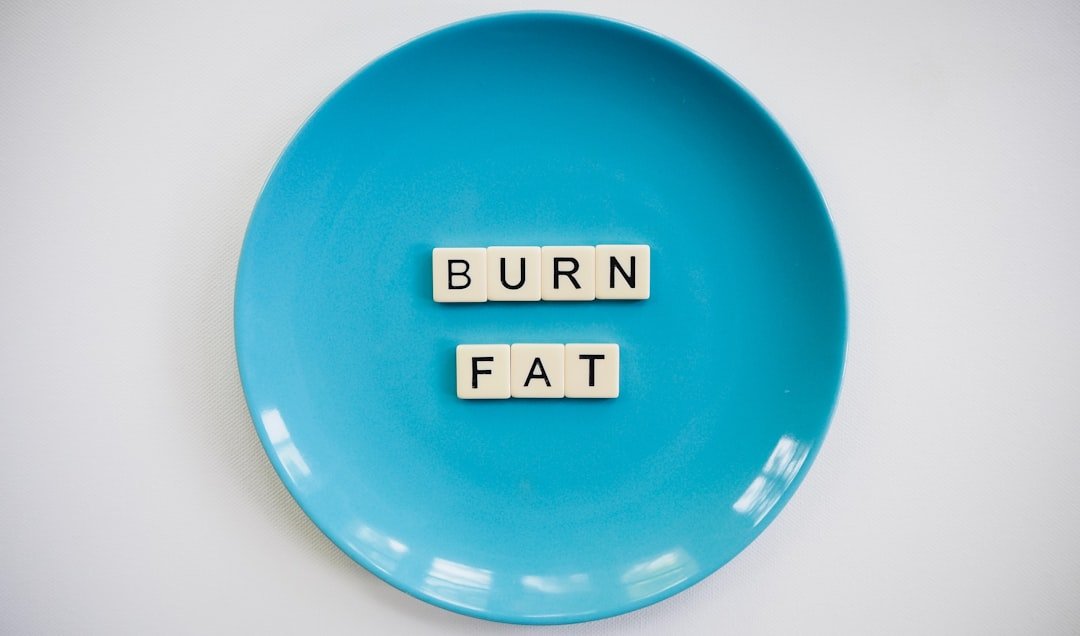Weight loss is a topic that is often discussed and sought after by many individuals. Whether it is for health reasons, to improve self-confidence, or to fit into a certain outfit, losing weight can have a significant impact on a person's life. This blog post aims to provide a comprehensive guide to weight loss, covering various aspects such as understanding the science behind weight loss, setting realistic goals, creating a calorie deficit through diet and exercise, incorporating strength training, finding healthy and satisfying food options, avoiding common pitfalls, staying motivated and accountable, tracking progress and making adjustments as needed, seeking support from friends and family, and celebrating small successes while maintaining long-term habits.
Key Takeaways
- Understanding the science behind weight loss is crucial for success.
- Setting realistic goals is important for sustainable results.
- Creating a calorie deficit through diet and exercise is key to losing weight.
- Incorporating strength training can increase metabolism and aid in weight loss.
- Finding healthy and satisfying food options is essential for long-term success.
Understanding the science behind weight loss
To understand how weight loss works, it is important to grasp the concept of calories. Calories are units of energy that our bodies need to function properly. When we consume more calories than our bodies need for daily activities and bodily functions, the excess calories are stored as fat. On the other hand, when we consume fewer calories than our bodies require, our bodies start using stored fat as a source of energy, leading to weight loss.
In addition to understanding calories, it is crucial to recognize the role of metabolism in weight loss. Metabolism refers to the chemical processes that occur within our bodies to convert food into energy. A healthy metabolism ensures that our bodies efficiently burn calories and maintain a healthy weight. Factors such as age, gender, genetics, and body composition can influence metabolism. By adopting healthy lifestyle habits such as regular exercise and eating a balanced diet, we can boost our metabolism and facilitate weight loss.
Setting realistic goals for sustainable results
When embarking on a weight loss journey, it is important to set realistic goals that are achievable and sustainable in the long run. Setting unrealistic goals can lead to frustration and disappointment, which may ultimately result in giving up on the weight loss journey altogether. To set realistic goals, it is important to consider factors such as current weight, desired weight, time frame, and overall health.
One tip for setting achievable goals is to break them down into smaller, more manageable milestones. For example, instead of aiming to lose 50 pounds in a month, set a goal to lose 1-2 pounds per week. This approach allows for steady progress and prevents feelings of overwhelm. It is also important to be patient and consistent. Weight loss is not an overnight process, and it requires dedication and perseverance. By staying consistent with healthy habits such as regular exercise and mindful eating, sustainable results can be achieved.
Creating a calorie deficit through diet and exercise
Creating a calorie deficit is essential for weight loss. As mentioned earlier, a calorie deficit occurs when we consume fewer calories than our bodies need for daily activities and bodily functions. This deficit forces our bodies to use stored fat as a source of energy, resulting in weight loss.
To create a calorie deficit, it is important to focus on both diet and exercise. In terms of diet, it is crucial to consume nutrient-dense foods that are low in calories but high in vitamins, minerals, and fiber. This includes fruits, vegetables, lean proteins, whole grains, and healthy fats. It is also important to practice portion control and mindful eating to avoid overeating.
In terms of exercise, incorporating both cardiovascular exercises and strength training can help create a calorie deficit. Cardiovascular exercises such as running, cycling, swimming, or dancing can help burn calories and improve cardiovascular health. Strength training exercises such as weightlifting or bodyweight exercises can help build lean muscle mass, which in turn increases metabolism and helps burn more calories even at rest.
Incorporating strength training for increased metabolism
Strength training is often overlooked when it comes to weight loss, but it plays a crucial role in increasing metabolism and facilitating weight loss. When we engage in strength training exercises, we build lean muscle mass. Muscle is more metabolically active than fat, meaning it burns more calories even at rest. By increasing muscle mass through strength training, we can boost our metabolism and burn more calories throughout the day.
Incorporating strength training into a workout routine can be done in various ways. It can involve using free weights, resistance bands, weight machines, or even bodyweight exercises. It is important to start with lighter weights or resistance and gradually increase as strength improves. Aim for at least two to three strength training sessions per week, targeting different muscle groups each time. This will ensure that all major muscle groups are worked and allow for proper recovery.
Finding healthy and satisfying food options

When it comes to weight loss, it is important to find healthy and satisfying food options that can be incorporated into a balanced diet. Many people associate weight loss with deprivation and restrictive eating, but this approach is not sustainable in the long run. Instead, focus on making healthier choices and finding alternatives to high-calorie, low-nutrient foods.
One tip for making healthy food choices is to prioritize whole, unprocessed foods. These include fruits, vegetables, lean proteins, whole grains, and healthy fats. These foods are nutrient-dense and provide essential vitamins, minerals, and fiber while being lower in calories compared to processed foods.
Another tip is to practice mindful eating. This involves paying attention to hunger and fullness cues, eating slowly, and savoring each bite. By being present during meals and snacks, we can better tune in to our body's needs and avoid overeating.
Avoiding common weight loss pitfalls
When trying to lose weight, it is common to fall into certain pitfalls that can hinder progress. One common mistake is relying solely on fad diets or quick fixes. These approaches often promise rapid weight loss but are not sustainable in the long run. Instead, focus on making lifestyle changes that can be maintained for the long term.
Another common pitfall is setting unrealistic expectations. As mentioned earlier, setting achievable goals is crucial for sustainable results. It is important to remember that weight loss is a journey and not a destination. Celebrate small successes along the way and focus on progress rather than perfection.
Staying motivated and accountable
Staying motivated throughout the weight loss journey can be challenging, but it is crucial for success. One suggestion for staying motivated is to set short-term and long-term goals. Short-term goals can provide a sense of accomplishment and keep motivation high, while long-term goals can serve as a reminder of the bigger picture.
Accountability is also important when it comes to weight loss. This can be achieved through various methods such as tracking progress, seeking support from friends and family, or even joining a weight loss support group. By being accountable to oneself and others, it becomes easier to stay on track and make healthy choices.
Tracking progress and making adjustments as needed
Tracking progress is an essential part of the weight loss journey. It allows individuals to see their progress over time and make adjustments as needed. There are various ways to track progress, including weighing oneself regularly, taking measurements, or even keeping a food diary.
When tracking progress, it is important to remember that weight loss is not linear. There may be weeks where progress stalls or even slight weight gain occurs. This is normal and should not be a cause for discouragement. Instead, focus on overall trends and make adjustments if necessary. This could involve adjusting calorie intake or changing up exercise routines.
Seeking support from friends and family
Having a support system can greatly contribute to the success of a weight loss journey. Friends and family can provide encouragement, accountability, and motivation when times get tough. It is important to communicate with loved ones about goals and seek their support.
One tip for seeking support is to find a workout buddy or join a fitness class. Exercising with a friend or participating in group activities can make the weight loss journey more enjoyable and provide a sense of camaraderie. Additionally, sharing healthy meals or recipes with friends and family can create a supportive environment and make healthy eating more enjoyable.
Celebrating small successes and maintaining long-term habits
Celebrating small successes along the weight loss journey is important for motivation and maintaining long-term habits. Weight loss is not solely about reaching a certain number on the scale; it is about adopting healthy lifestyle habits that can be sustained for the long term.
One way to celebrate small successes is to reward oneself with non-food-related treats. This could involve buying a new workout outfit, treating oneself to a spa day, or even taking a weekend getaway. By rewarding oneself for progress, it becomes easier to stay motivated and continue making healthy choices.
Maintaining long-term habits also involves finding enjoyment in the process. This could mean trying new recipes, exploring different types of exercise, or even joining a sports team or club. By finding activities that are enjoyable and sustainable, weight loss becomes more than just a goal; it becomes a lifestyle.
In conclusion, weight loss is a journey that requires dedication, patience, and consistency. By understanding the science behind weight loss, setting realistic goals, creating a calorie deficit through diet and exercise, incorporating strength training, finding healthy and satisfying food options, avoiding common pitfalls, staying motivated and accountable, tracking progress and making adjustments as needed, seeking support from friends and family, and celebrating small successes while maintaining long-term habits, sustainable results can be achieved. Remember that weight loss is not just about reaching a certain number on the scale; it is about adopting healthy lifestyle habits that can be maintained for the long term. Start or continue on your weight loss journey with confidence and determination.
If you're looking to lose weight and want to try something new and exciting, why not consider martial arts? Understanding different martial arts styles can not only help you get in shape but also provide mental and physical strength. White Tiger Martial Arts, in particular, offers numerous benefits for practitioners. Check out this article on the USHRK blog that breaks down the basics of different martial arts styles and highlights the advantages of practicing White Tiger Martial Arts. Learn more here and start your journey towards a healthier lifestyle today!
FAQs
What is the recommended amount of weight loss per week?
The recommended amount of weight loss per week is 1-2 pounds.
What is the best way to lose 2 pounds a week?
The best way to lose 2 pounds a week is to create a calorie deficit of 500-1000 calories per day through a combination of diet and exercise.
What kind of diet should I follow to lose 2 pounds a week?
To lose 2 pounds a week, you should follow a balanced diet that includes lean protein, whole grains, fruits, vegetables, and healthy fats. It is important to limit processed foods, sugary drinks, and high-fat foods.
How much exercise should I do to lose 2 pounds a week?
To lose 2 pounds a week, you should aim for at least 150 minutes of moderate-intensity exercise or 75 minutes of vigorous-intensity exercise per week. This can be achieved through activities such as brisk walking, running, cycling, or swimming.
Is it safe to lose 2 pounds a week?
Losing 2 pounds a week is generally considered safe for most people. However, it is important to consult with a healthcare professional before starting any weight loss program, especially if you have any underlying health conditions.














